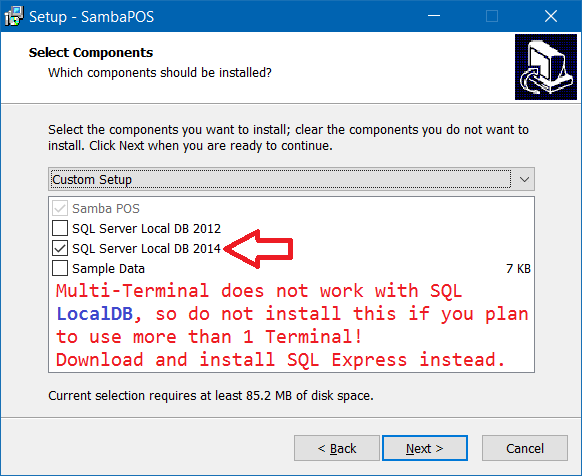The OS is irrelevant. Multi-terminal works with systems that are Windows 7, 8, 8.1, and 10. All systems can have a different version of Windows.
Connection problems with multi-terminal are caused by multiple reasons, but the Windows OS version is not one of them.
Android is not a Windows OS, so it will not work. You need to wait for the release of the cross-platform Browser POS that is in development to use SambaPOS on Android and Apple devices. There is no release date for this at this time.
As @JTRTech mentions, multi-terminal does not work with with SQL LocalDB (this is a single-connection DB Engine). You must use full SQL Express for multi-terminal. LocalDB runs as a User Process that you can see in Task Manager and the DB files are often stored in a User Path. LocalDB is listed as an installation component when you install SambaPOS, so if you chose to install it at that time, you are probably running LocalDB, so it will not work with multi-terminal.

Full SQL Express runs as a Windows Service, and DB files are often stored in the Program Files SQL path. It is a separate download and installation. The 2 DB Engine versions are compatible, so you can upgrade LocalDB to Express without losing your data.
You need to:
-
ensure you are running SQL Express first.
-
show your configuration settings for all Terminals (connection string).
-
show your Windows Firewall Configuration (especially the Server machine).
Try this Topic - it is lengthy, but covers things in good detail: